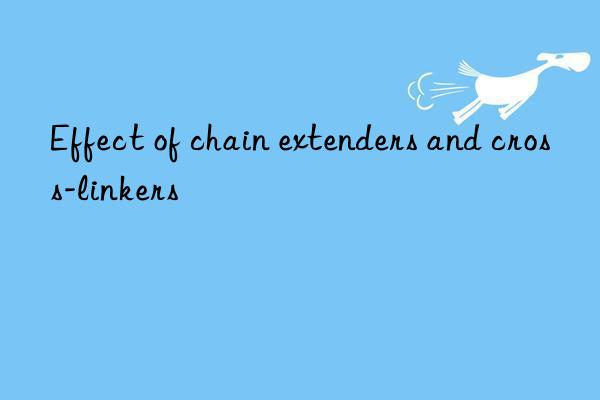
For the chemical cross-linking of polyurethane foam, the main way to achieve it is covalent bonding. Reactive isocyanates can react with many functional groups. Generally speaking, small molecule substances with two such functional groups are called chain extenders, while small molecule substances with more than two such functional groups are called cross-linking agents, because the former can change the main chain of the matrix molecule. Long, the latter makes it easier for the matrix molecular chain to form a network structure. The chain extender and cross-linking agent are used together to speed up the curing process of the foam, increase the cross-linking degree of the molecular network, and evenly distribute the cross-linking points, resulting in a foam with high density and small cells, thus improving its mechanical properties.
The increase in chain extenders will lengthen the molecular main chain and enhance mobility. When subjected to external forces, energy can be absorbed through chain segment movement, and the elasticity of foam plastics and toughness improved, but rigidity decreased. As the cross-linking agent increases, the cross-linking density of the system increases, chain segment movement is blocked, the ability to maintain the body structure is enhanced, and it can resist larger external forces. The foam plastic becomes stronger and less flexible. However, there are some hydrogen bonds in foam plastics, and the increase in cross-link density will lead to enhanced chain separation. This non-covalent bond attraction effect between molecules will be destroyed by the increase in chemical cross-links. At the same time, the introduction of cross-linking bonds destroys the regularity of the molecular chain and reduces the crystallization ability of the soft segment of polyurethane foam. These effects will relatively reduce the strength of foam plastics, so the amount of cross-linking agent cannot be too large. Using chain extenders and cross-linking agents together can produce foams with excellent comprehensive properties.



 微信扫一扫打赏
微信扫一扫打赏
